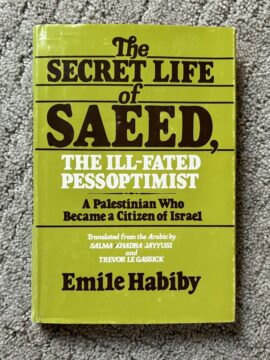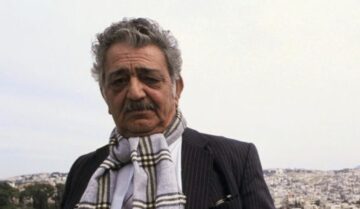Seraj Assi in Jacobin:
 The Palestinian Nakba produced, alongside death and displacement, a generation of writers who came of age in its aftermath. The moment seemed to demand a funereal tone from artists who had witnessed the tragedy. For them, a version of Theodor Adorno’s maxim, that to “to write poetry after Auschwitz is barbaric,” rung true. Few broke the taboo.
The Palestinian Nakba produced, alongside death and displacement, a generation of writers who came of age in its aftermath. The moment seemed to demand a funereal tone from artists who had witnessed the tragedy. For them, a version of Theodor Adorno’s maxim, that to “to write poetry after Auschwitz is barbaric,” rung true. Few broke the taboo.
Born in Haifa 102 years ago, Emile Habibi was an exception. His 1974 masterpiece, The Secret Life of Saeed: The Pessoptimist, dared to approach the Nakba with irreverence; the Palestinian catastrophe was for him a tragicomic saga, which he depicted with a firm sense of irony. “Had it not been for your Shoah . . . then the calamity that remains the lot of my people would not have been possible,” he wrote in a 1986 article.
 Habibi grew up under the system of military rule imposed on Palestinians within the newly established state of Israel between 1948 and 1966 and brought to an end in 1967, when Israel launched the Six-Day War against its Arab neighbors. This regime was, for Palestinians, a segregationist one: land appropriation and restrictions on movement as well as political and intellectual expression were its defining features.
Habibi grew up under the system of military rule imposed on Palestinians within the newly established state of Israel between 1948 and 1966 and brought to an end in 1967, when Israel launched the Six-Day War against its Arab neighbors. This regime was, for Palestinians, a segregationist one: land appropriation and restrictions on movement as well as political and intellectual expression were its defining features.
More here.
Enjoying the content on 3QD? Help keep us going by donating now.
